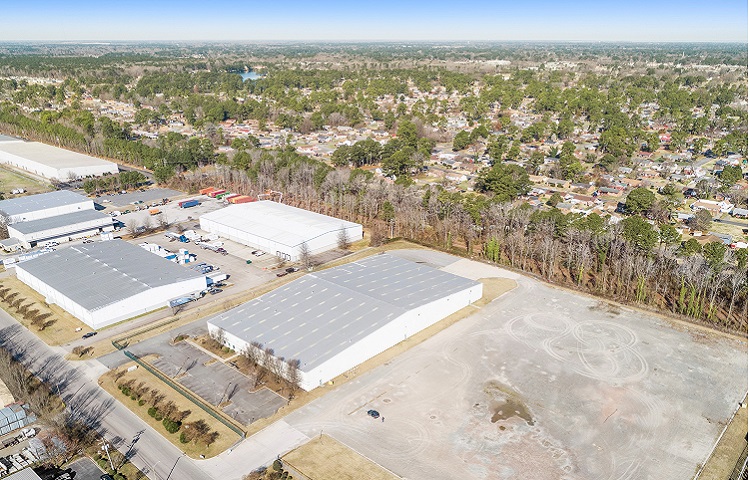Presented By: Colliers International
Investors Still Showing a Strong Preference for Industrial
Colliers spoke about the strength of the industrial sector propelled by crushing demand, with investors still clamoring toward the sector
By Colliers International September 12, 2022 7:00 am
reprints
The industrial sector has been commercial real estate’s rare source of consistent good news over the past two years, as e-commerce and last mile delivery have made industrial real estate a cornerstone of CRE’s COVID era. But lately, with industrial demand consistently off the charts, whispers about a dearth of supply are creeping into discussions of the sector, calling into question whether this trend is beginning to subside. Partner Insights spoke with Michael Blunt, Executive Vice President and Clay Ellis, Senior Associate at Colliers, to discuss the current standing of the industrial sector overall, and its strength in their main area of focus, the Mid-Atlantic region.

Commercial Observer: Given the incredible demand in the hot industrial sector, supply has become stretched. Due to this, is the industrial sector finally starting to calm down a bit?
Michael Blunt: We are continuing to see strong fundamentals across the U.S., including extraordinary rental rate growth. Even with a substantial amount of new development, we were so undersupplied that new construction deliveries are still in balance with leasing momentum. From a capital markets perspective, we continue to see a significant amount of capital interested in investing in industrial real estate, and these investors continue to increase their capital raises. So from both a capital placement and leasing standpoint, the momentum within industrial remains active.
How strong is the industrial market in the DC/Mid-Atlantic region?
Michael Blunt: The Baltimore Washington Industrial Corridor has continued to see low vacancy rates, historic rental rate growth, and strong absorption, despite more new construction. A major driver, even during COVID, is the percentage of overall retail sales that come from e-commerce, which continued to grow partly due to the public space use restrictions required from a health perspective. More people bought goods online. The increase in e-commerce sales activity has contributed to the need for more industrial space, particularly last-mile industrial and fulfillment centers.
Has the industrial sector seen a good amount of first time investors?
Michael Blunt: Absolutely. We’ve seen unprecedented capital inflows into the industrial space. Much of this investment has been from traditional industrial investors, but we’ve also seen capital emanate from new investors, particularly those who may have invested in other product types, like office. If you want some specific examples of those groups in the Washington DC area, we would point to The Meridian Group, and Penzance. They are DC based owners who traditionally have been major players on office, residential and mixed-use assets throughout the DC metro. Collectively, they have been extremely active in industrial speculative development opportunities, particularly in the I-81 corridor in and around Hagerstown, MD.
What type of returns are industrial investors generating these days?
Michael Blunt: Traditionally, multifamily has been the leader in cap rate expectations at around 4%. Industrial assets within the DC region have accelerated to the point where this product type is now very competitive with the cap rate expectations of multifamily. Throughout my almost 30-year career, this is the first time cap rates have compressed to that level for industrial.
What are some tips you’d give to investors regarding how to best evaluate potential industrial investments now?
Michael Blunt: The golden principle of location, location, location, when it comes to industrial investment, means access to labor and transportation. So in today’s industrial environment, we tend to focus on proximity to population centers providing connectivity to both consumers and labor, as well as to critical logistics infrastructure, like seaports, rail, highways, and parcel delivery services.
Let’s talk about your department’s recent sales activity. Tell me about a few of your recent sales.
Michael Blunt: Colliers, led by our team, sold a $167 million land site on behalf of U.S. Steel, which closed at the end of 2020. It was a very complex development site that ultimately will yield over 10 million square feet of Class A warehouse distribution inventory. This was an example of how industrial capital priced right through the uncertainty of COVID. When the site is fully delivered, it’ll have over $1 billion of total capital investment.
Clay Ellis: We recently sold a deal in Chesapeake, Virginia, a 70,000-square-foot industrial building on about 9.5 acres. It was an interesting deal. USPS signed a term-lease but only uses the facility seasonally. A major factor driving this decision was the local market’s 0.5% vacancy rate. Given the importance of outdoor storage, investors and the eventual buyer were willing to underwrite really strong rental rates by recognizing the value in bifurcating building rent and outdoor storage rent. We were able to close this transaction at strong pricing despite some market volatility caused by several interest rate hikes from the Fed.
Clay – what is the most important thing you’ve learned from Michael about industrial capital markets?
Clay Ellis: To try to expand the net when thinking about how to promote the opportunities and assets we’re working on, whether we’re pursuing them or actively marketing them. I’m talking about meticulous attention to detail – finding every little bit of information we can get about a building or development site, anything that would be helpful to an investor or seller when we’re marketing the property in order to make it easier to digest and understand the opportunity, and then looking for every possible way to maximize investment value.
How does Collier’s vast commercial real estate experience assist and support your clients and their sales endeavors?
Michael Blunt: Colliers, as a preeminent global commercial real estate services platform, has expertise across several disciplines, including leasing, management, and capital markets. Having the ability to leverage these disciplines helps us provide our clients with the best possible real-time advice and market information, and that’s an absolute competitive advantage that I rely on every day. It takes every aspect of the platform to make sure we have the most accurate and comprehensive information available, so that our clients can make the best and most informed decisions.


